The editor changes his game to accommodate an airgunning phenomenon
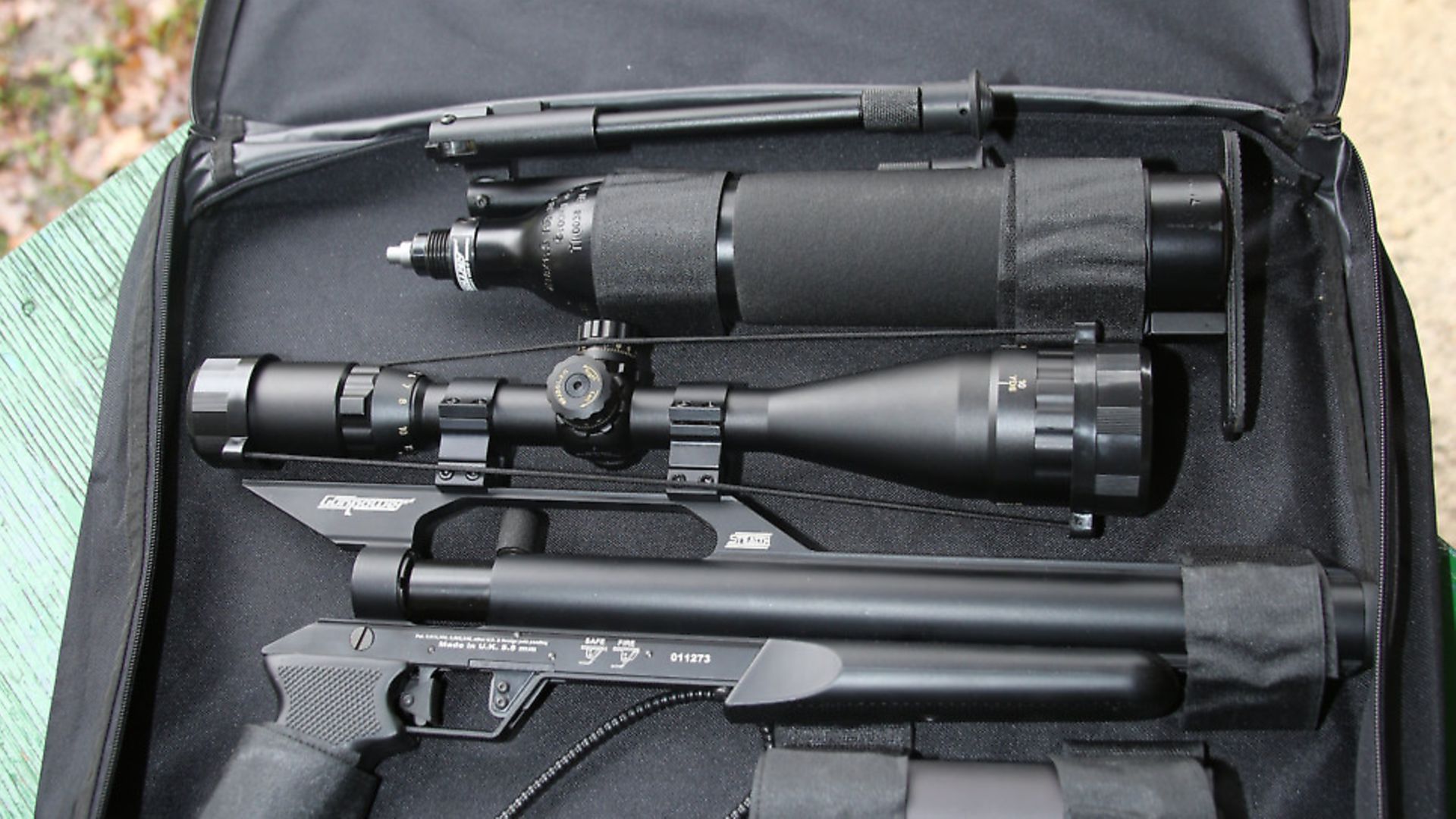 credit: Archant
credit: Archant
I’m doing a complete about-face this month and, sad creature that I am, once again I find myself getting all sorts of excited about testing a ‘different’ rifle in a different way. First, the rifle in question is the original takedown PCP, the Gunpower Stealth, which now commands full-on cult status since its emergence during the late 1990s. Even today, amid a vast range of black, ‘tactical’ rifles, complete with accessory rails, distinctive styling and a potential options list longer than their barrels, the Stealth manages to stand alone, even without its optional bipod. It has even managed to resist the overwhelming requirement for multi-shot capability. Quite simply, nothing looks, handles or shoots like a Gunpower Stealth. This is a rifle that does things its own way.
Next, my different way of testing it will fly in the face of what I’ve done these past 30-odd years. Normally, I do as much pre-test homework as I possibly can, which includes interviewing those involved in a rifle’s design, manufacture and distribution. I usually speak to some trusted sources, too, especially if they’ve been involved in testing prototypes of the review rifle, or when they have specific experience of it. Then, if the test rifle isn’t brand-new and I know of any owners who’ve used one for a while, I’ll get their opinions, too. After all of this information is safely harvested and my sheaf of notes is stashed in my testing kit, I head for the range, forewarned and forearmed.
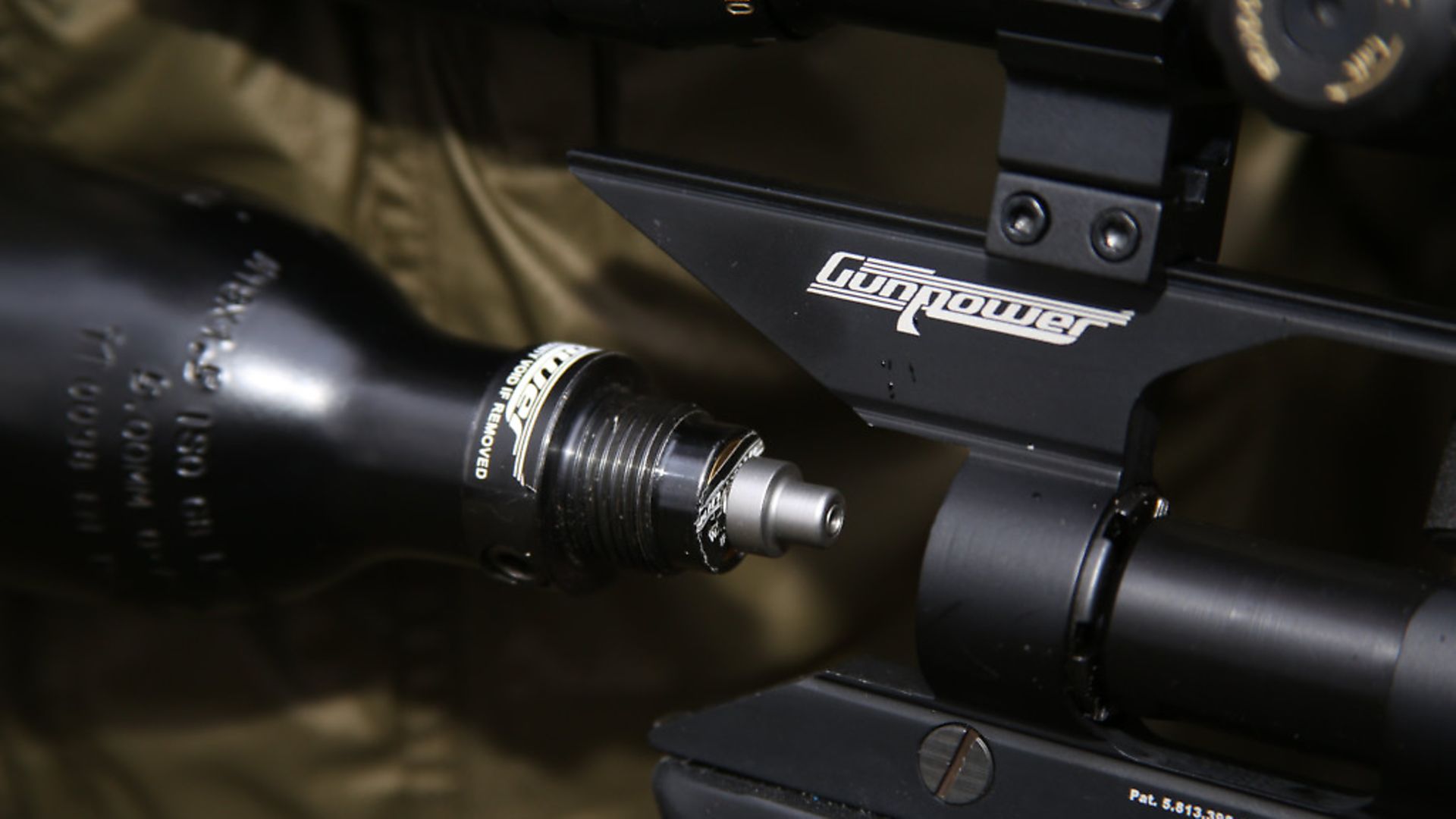 credit: Archant
credit: Archant
Different strategy
Not this time; for this one I’m going to shoot first and ask questions later. I’ve tested several Stealths, so I know the deal, but this is the latest version and I know things have been done to it, inside and out. My plan is to obtain my results first, then investigate what may have brought them about. I say ‘may’ because it’s not always certain that an upgrade automatically brings improvement in terms of visible results. Often, a rifle’s components are upgraded to improve reliability or longevity, rather than any result that can be measured on a test target, or felt during handling.
The system will be simple, then; I’ll describe what I have in my hands, assemble, charge and shoot it, then give my verdict. I’ll even do what we should all do, but rarely get round to, and study the rifle’s manual. How very non-bloke, I trust you’ll agree.
Finally, at the end of this test, I’ll list my observations and only then go to my sources for the inside story and to have my findings explained. There will be a follow-up test in the March issue, where I’ll supply the background details that aren’t in this one. I hope that’s sorted the ‘about-face’ format. Let’s get on with the test.
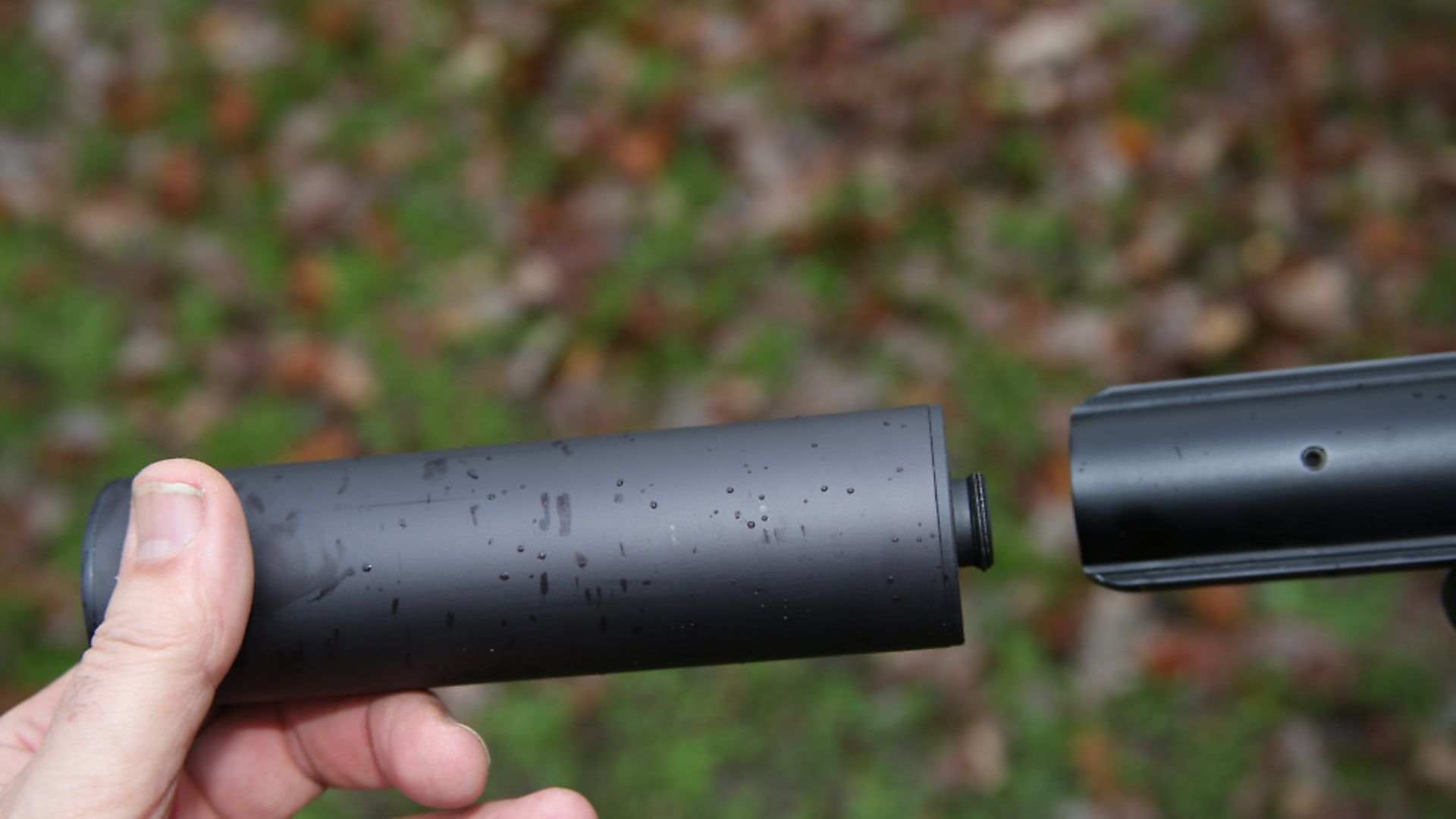 credit: Archant
credit: Archant
In the box
The Gunpower Stealth usually comes in a cardboard box that looks way too small to accommodate a full-size rifle. Within that box you’ll find the two components of the Stealth, the action and the buddy bottle butt system, and once you’ve taken delivery of these and fitted a scope to the rifle’s hi-rise rail, the cardboard box becomes redundant, because you can’t put the rifle back in it without removing the scope. Thus, the first Stealth option hoves into view, in the immensely handy form of the zip-up, soft ‘laptop’ case pictured here. Within this case, your scoped-up Stealth can be secured via the most tenacious Velcro tabs I’ve ever encountered, along with another couple of compulsory options, the £45 silencer and the £89 bipod.
Oddly, the Stealth’s charging adaptor is also an option, and I recall asking Gunpower’s Geoff Darville about this a few years ago. He told me the adaptor wasn’t included in the price of the rifle because many of Gunpower’s customers have more than one model and buying the rifle only reduced the price for them. Basically, the purchase price of the rifle doesn’t include the cost of an adaptor in case the buyer doesn’t need one. Explained that way, it makes sense, although I suspect it won’t be seen like that by newcomers to the Gunpower brand. Anyway, the adaptor costs £32.95, and forms the union between the Stealth’s 490cc, removable air tank and its refill method. Simply put, you unscrew the Stealth’s air tank, attach it to the adaptor, which is screwed onto your air supply, and you fill the tank with air, before re-fitting it to the rifle. This takes about a minute.
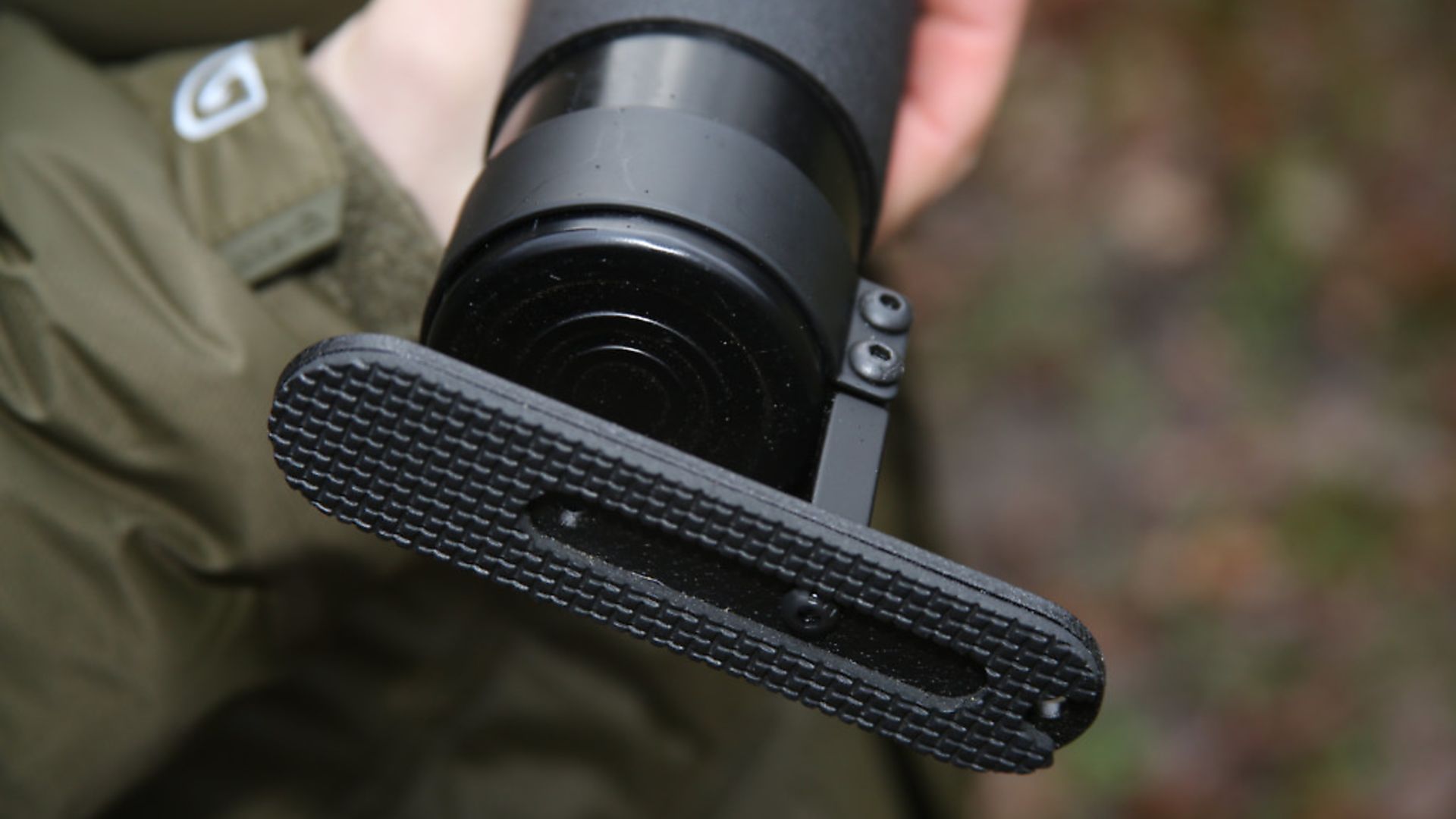 credit: Archant
credit: Archant
Charging and capacity
With a full, 3000 psi, charge installed, the Stealth’s air reservoir will produce the very thick end of 500 shots at 11-plus ft.lbs. in .22, and getting on for 400 in .177. The illustration in the rifle’s manual shows another option I’ve yet to use, which could be another worth considering. It’s the ‘Spin-Loc tank system’ which includes an on-board pressure gauge and the facility to charge the rifle with its bottle attached. This locks the bottle in place, though, so if the Stealth’s takedown feature is important to you, the Spin-Loc system might be a non-starter. From my recent research into the Air Arms S510 TDR takedown, I now know that a significant number of owners leave their takedowns permanently assembled, so the Spin-Loc option will prove popular, I’m sure.
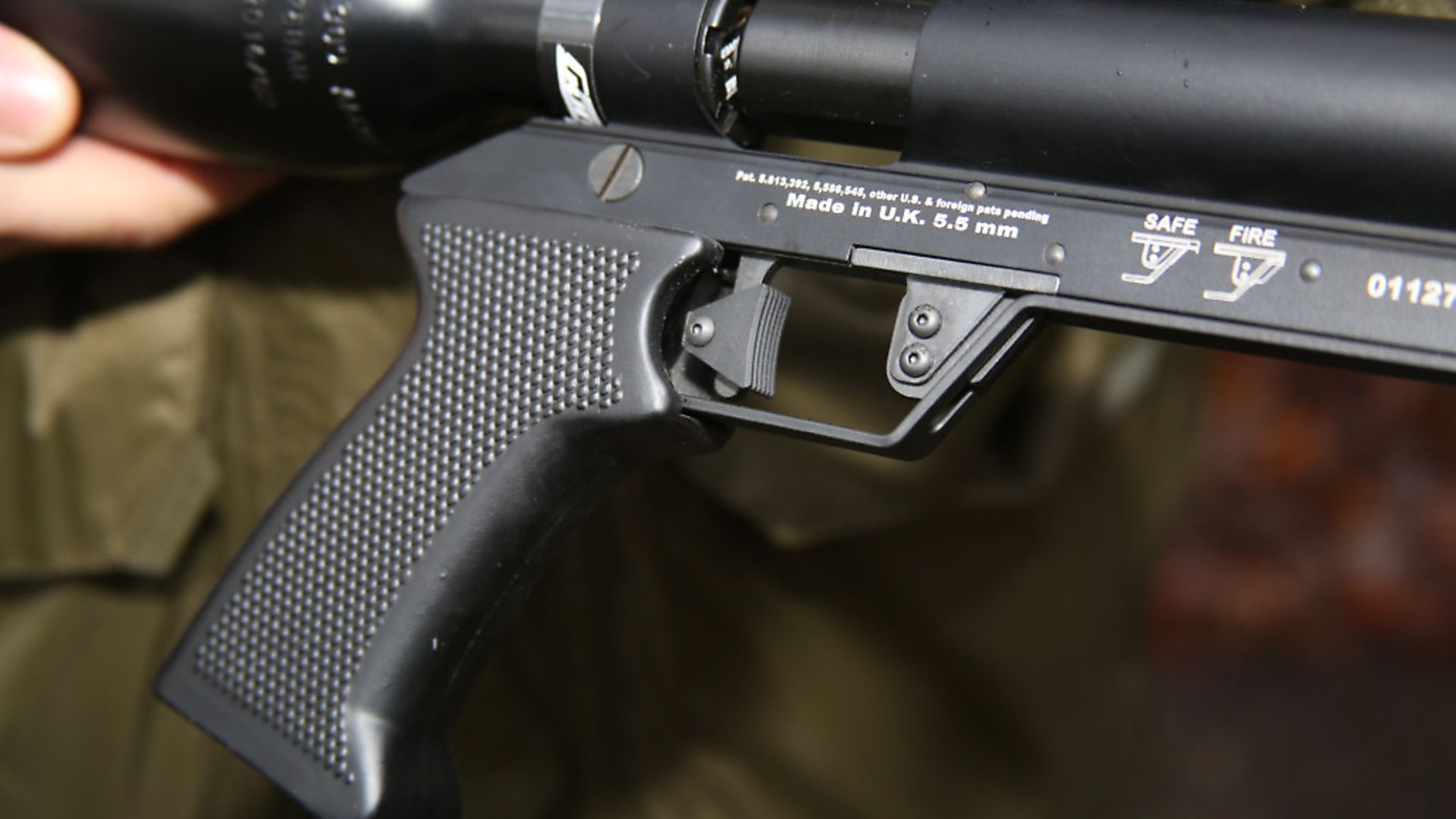 credit: Archant
credit: Archant
Here comes the lecture
I can’t leave this phase of the review without my usual tedious warnings of doom, gloom and mechanical disaster if you don’t keep the charging connectors free of potentially invasive crud. This warning applies double to any airgun that can be taken apart and sees its vitals more exposed than the standard format rifles. I once saw someone drop the newly charged air tank of a Stealth, which plugged, valve-first, into the mud. The ‘challenged’ chap then gave the encrusted valve a quick wipe with his grubby hand, blew on it a couple of times, and was about to screw it into the rifle’s action when I intervened. It took a full 10 minutes of meticulous brushing, picking and flicking, followed by a visual inspection under a jewellers’ loupe, to get that valve into an acceptable state to be reconnected to the rifle. All the while, its owner tutted, sighed and called me impolite names. Looking back, I should have let his rifle’s failure teach him a better lesson than I managed. Don’t be a challenged person. Keep those connectors absolutely spotless and your rifles will surely thank you for it.
 credit: Archant
credit: Archant
Assembly essentials
As simple as it sounds, there’s a proper way to re-attach the Stealth’s air bottle correctly. Just give the rifle’s cocking button a nudge forward to get the bolt out of the way before screwing home the tank. That’s it. There’s no need to cock the rifle fully, just slide that bolt forward and all will be fine.
Fitting the scope needs to be done properly, too, but this time it’s all about the height of the eyepiece and its alignment with your eye. The design of the Stealth puts any scope a fair way above the barrel, so I’d recommend you begin with the lowest mounts you can get away with. The cylindrical ‘cheek piece’ allows a variety of resting places for the face, plus the variable height and pull-length options on the Stealth’s butt plate permit a degree of fine-tuning, so please make full use of these. The mantra, here, is ‘make the gun fit you, rather than the other way round’. This rifle offers gunfit assistance, and every bit of it should be utilised.
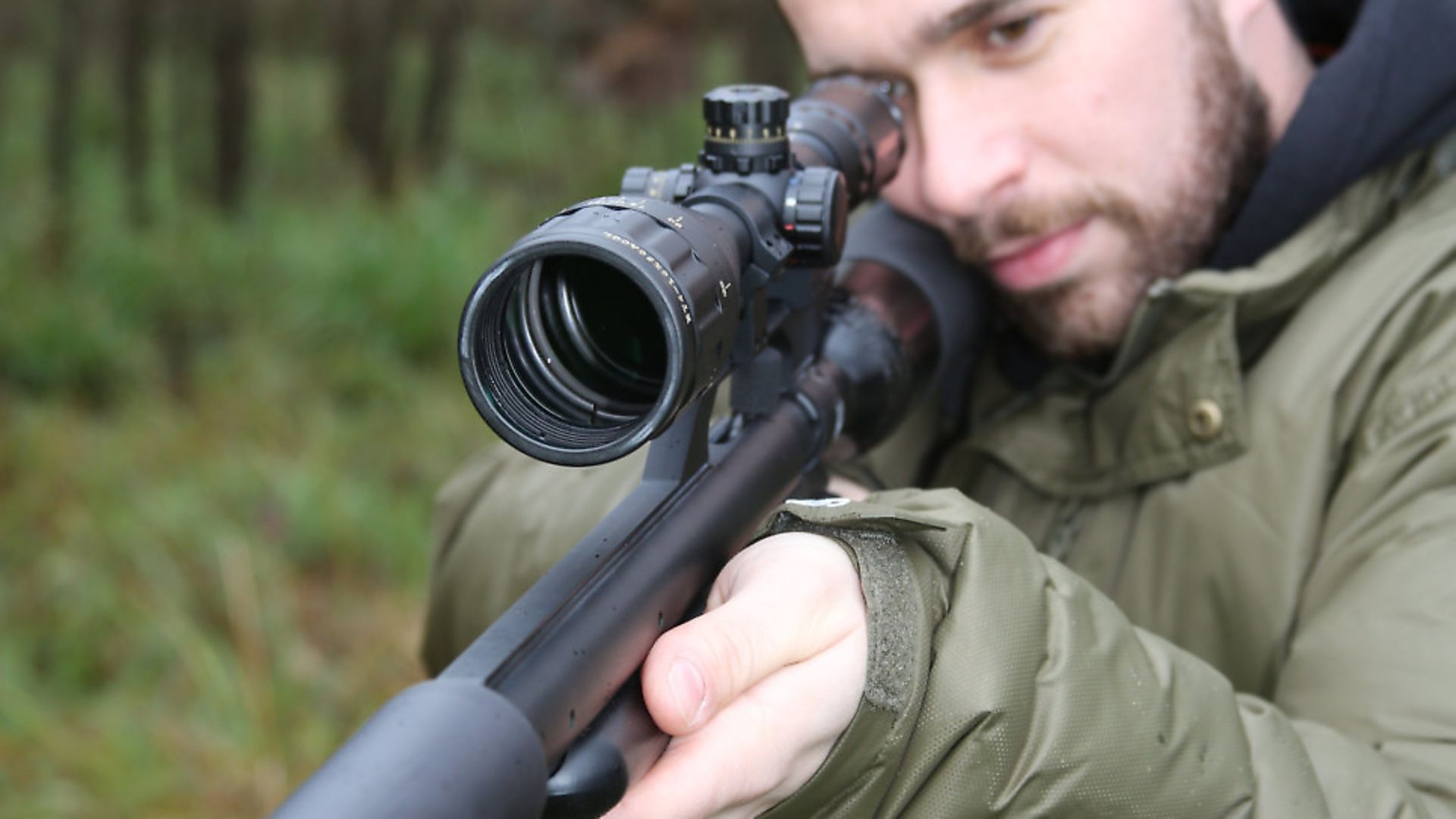 credit: Archant
credit: Archant
Ready to shoot
With the rifle assembled and the scope in optimum position, it’s time to get it on the test bench and see what sort of accuracy I can get out of it. By now, one upgrade had already made its presence felt and it’s one of which all potential Stealth owners will heartily approve. The compound of the ambidextrous fore grip and drop-down pistol grip has changed and now feels much, well, ‘grippier’. At first I thought Gunpower had switched to a soft, rubberised material, but it’s still hard and resilient; it just feels soft and more secure in the hand. This upgrade provides a more positive connection between rifle and shooter, and that’s never a bad thing.
The test rifle is a .22, so I lined up my tried and tested pellet brands, screwed home the optional silencer Gunpower had included, and plumped up a beanbag to nestle the rifle into. I had the option of the bipod, but declined that for the initial session to keep the rifle as low as possible on the bench. First shots on approach!
Using and assessing - initial impressions
To load the single-shot, ambidextrous Stealth, the cocking handle is pushed forward against the pressure of the hammer spring until it clicks into retention. A pellet is then loaded directly into the exposed breech, before the cocking handle is returned to seal the breech, and locked into position with a quarter turn to the left or right.
Cocking the rifle automatically sets the safety catch, which is positioned just ahead of the trigger show. This catch is a definite upgrade on the ‘Swan Vesta’ – the previous version looked like a match head – and it can be reset by pushing forward the cocking handle. A forward prod with the trigger finger disengages the safety catch, and the Stealth is ready to shoot.
Trigger
This rifle once again flies in the face of conventional design, by having a non-adjustable, two-stage trigger. The trigger shoe can be shifted but the mechanism itself is set at the factory. Now, for those already curling a snooty lip at such a feature, I’ll insist you try before you sneer. The fact is, the Stealth’s trigger is an entirely credible one and it slips every shot with predictable precision, and without creep, drag or hesitancy of any kind. It’s not a ‘breathe on it and it will shoot’ trigger, and it’s all the better for it. This is a practical, safe, sensible trigger that gets the job done well. Yes, really.
Consistency and accuracy
I shot five ‘clearing’ pellets immediately after charging the rifle, set up the chrono’, and went through the zeroing process, recording the Stealth’s output as every five shots or so. After 150 shots, I discovered that the .22 test rifle was running at 11.1 ft.lbs., and it showed a maximum velocity variation of 19 f.p.s. More importantly, I’d confirmed that its Lothar Walther barrel was earning its keep to the tune of half-inch groups at 38 yards. I’d meant to set the target at 40 yards but somehow messed that up, and by the time I realised my error, it was hammering down and I wasn’t about to break cover to shift a target back two yards.
Settled in nicely, I concentrated on extracting maximum accuracy at 38 yards and drilled some satisfying raggedy one-holers before a capricious breeze joined in with the rain to mess things up a treat. During rare lulls, I cranked up the scope’s magnification and did my best on a 50-yard target, which span obligingly seven times out of ten. More wind and rain stopped play at this point, but the accuracy facts were well on their way to being established, and the Stealth had acquitted itself extremely well. This rifle definitely shoots to the hunting standard, which is exactly what it’s designed to do.
Thoughts and questions
As soon as this edition is finalised I’ll be speaking to Gunpower’s Geoff Darville and getting the inside story on what’s been done to the Stealth since last I tested one. Geoff’s a cagey guy, so I don’t know what, if anything, he’ll reveal, but for me there’s an increased impression of precision about the latest Stealth, and that compound certainly improves hand contact and therefore handling.
For now, I can see the appeal of this, the ultimate ‘Marmite’ airgun, and its success over a couple of decades confirms that more than enough people like it, to keep it coming back for more. Long may we have these ‘different’ guns within our sporting catalogue. Here’s to a healthy, Stealthy New Year.
Specification:
Model: Stealth
Manufacturer: Gunpower
Country of origin: UK
Contact: 01233 642357
Type: Takedown, pre-charged pneumatic, single-shot sporter
Calibre: .177, .20 or .22
Cocking: Push-forward bolt
Loading: Direct to barrel, via sliding breech
Trigger: Two-stage unit. Factory-set pull-weight, trigger shoe adjustable for position
Sights: Scope rail only
Stock type: Hi-impact synthetic fore end and grip. Buddy-bottle butt. Fully ambidextrous
Weight: 2.4k (5.25lbs. unscoped)
Length: 740mm (29 inches)
Barrel: 300mm (12 inches) Lothar Walther match grade
Power: 11-plus ft.lbs.
Options: Charging adaptor £32.95, bipod £79, silencer £49 and laptop-style case £45
RRP: £579.95
Read our editor’s reviews of the...
The Hatsan Nova Tact Compact
The Priest, RTI Arms
Air Arms S510 TDR